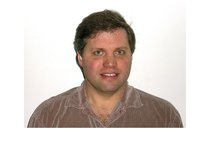Oral history interview with William S. Talbot
- 2005-Jan-10 – 2005-Jan-12
William S. Talbot grew up in Gainesville, Florida, enjoying nature, playing outside, and playing sports (for a time, an offensive guard and a nose tackle in football). His father was an oral surgeon who did a stint in the US Navy; his mother received a master's degree in education and, later in life, worked in property management. Although he did not appreciate it at the time, growing up in a university town provided Talbot with what he considered a great education and access to several influential teachers. In an advanced biology course Talbot had the opportunity to develop his own science fair project, which brought him into the lab of Edward Wakeland to work on the nature and extent of variation in wild mouse populations. Talbot decided to continue working with Wakeland as an undergraduate at the University of Florida, Gainesville, where he also broadened his intellectual horizons through studies in classes on the history of science. After completing his degree at Gainesville, he moved on to graduate studies at Stanford University in Palo Alto, California, working with David S. Hogness in developmental genetics on the hormonal control of metamorphosis in Drosophila, and then on to a postdoctoral position with Charles B. Kimmel at the University of Oregon mapping the zebrafish genome and characterizing mutations. From Oregon he returned to the east coast, accepting a position at the Skirball Institute at New York University, where he researched the genes involved in early tissue development of zebrafish and began collaborating with Alexander F. Schier. Soon after, though, Talbot decided to return to Stanford, working in vertebrate developmental biology, that is, at the genes involved in axis formation, tissue differentiation, and myelin formation. At the end of the interview, Talbot discusses patents; his reasons for becoming a principal investigator; collaboration and competition in science; setting the national scientific agenda; the privatization of scientific research; and his transition to studying myelin formation.
Access this interview
By request 1 PDF Transcript File and 10 Audio Recording Files
Fill out a brief form and a staff member will review your request for these files. You should receive an email within 3 business days.
Usage is subject to restrictions set by the interviewee.
If you have any questions about transcripts, recordings, or usage permissions, contact the Center for Oral History at oralhistory@sciencehistory.org.





